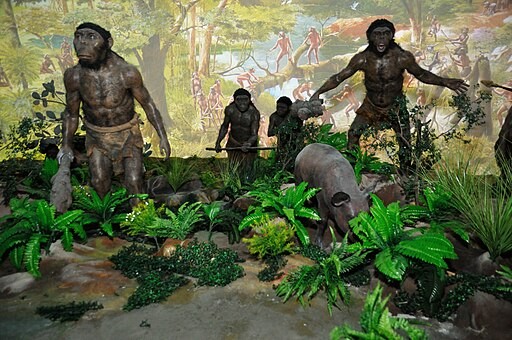Humans and apes display a remarkable diversity of locomotion types regarding animal movement. Not only can primates use four limbs to climb trees, but they can also walk upright on two legs.
Experts have long been intrigued by how humans evolved from a quadrupedal primate to a species with a bipedal stance. Neither fossil records nor past studies have allowed the reconstruction of a clear history of the early evolutionary stages that led to human bipedalism.

Unveiling the Evolution of Human Movement
When studying the evolution of ape locomotion, most scientists focus on comparing the bones of the limbs, pelvis, shoulders, and spine. They also associate them with the locomotor behaviors observed in living apes and humans. However, the diversity of locomotor behaviors seen in living apes and the incompleteness of the fossil record obstruct the development of a clear picture of the origins of human bipedalism.
In the early 1980s, the skull of Miocene ape Lufengpithecus was discovered in Shihuiba Village, Lufeng County, Yunnan Province in China. This rare fossil allowed the scientists to address unanswered questions about the evolution of human walking.
READ ALSO: Prehistoric Human Ancestor 'Lucy' Could Have Stood Up Straight, Walked, Climbed Trees
Bipedal Locomotion in Humans
Researchers from New York University discovered important clues about the origins of human bipedalism with the help of a novel method. They used modern imaging technologies to analyze the skulls of a 6-million-year-old fossil ape, Lufengpithecus.
Inside our skull are semicircular canals between the brain and the external ear. These tiny, fluid-filled tubes play an important role in maintaining our sense of balance and position when we move, providing a vital component of our locomotion that most people might be unaware of. According to study lead author Yinan Zhang from the Institute of Vertebrate Paleontology and Paleoanthropology of the Chinese Academy of Sciences (IVPP), the size and shape of the semicircular canals correlate with the movement of mammals around their environment.
The bony ear region of Lufengpithecus's skull showed heavy compression and distortion, which made researchers believe that the delicate semicircular canals were not preserved. To explore this region further, the research team used three-dimensional CT scanning to visualize the internal structure of fossil skulls and create a virtual reconstruction of the bony canals.
After that, the scans were compared to those collected from other living apes from Africa, Europe, and Asia. This method also enabled them to gain insights into the movement of extinct mammals. Their research points to a three-step evolution of human bipedalism.
In the first phase, the earliest apes moved in the trees in a way similar to the way gibbons in Asia do today. Second, the last common ancestor of humans and apes used clambering and climbing, arboreal bipedalism, forelimb suspension, and terrestrial quadrupedalism. It is from this broad ancestral locomotor repertoire similar to Lufengpithecus that human bipedalism evolved.
With the acquisition of bipedalism, the human lineage diverged from the great apes, as seen from Australopithecus discovered in Africa. By studying the rate of evolutionary change in the body structure, the team suggests that climate change may have influenced the locomotor diversification of humans and apes.
RELATED ARTICLE: 3.7-Million-Year-Old Mysterious Footprints in Tanzania Were From Humans, Not Bears; Evidence Shows Earliest Proof Of Hominin Bipedalism
Check out more news and information on Bipedalism in Science Times.














